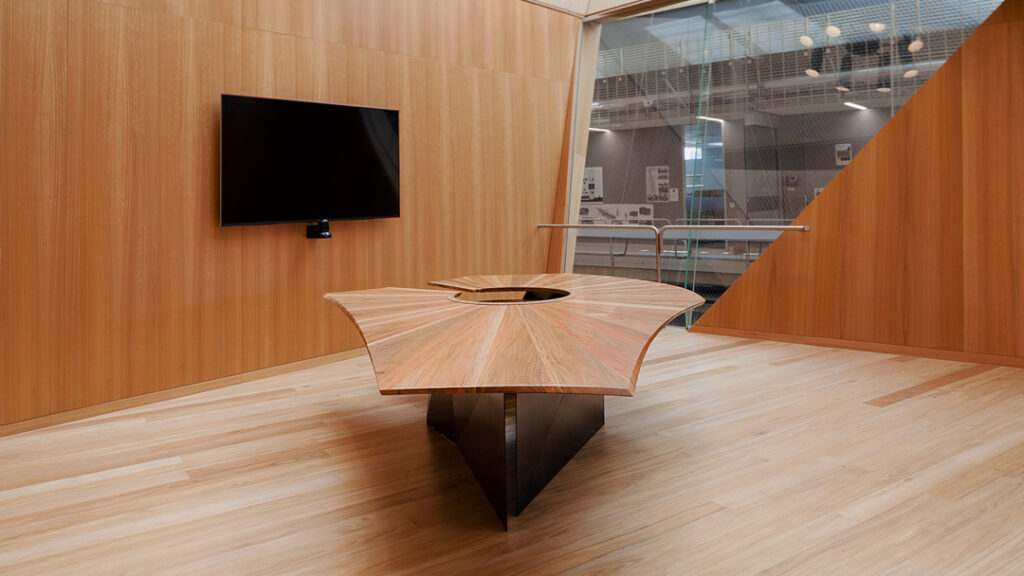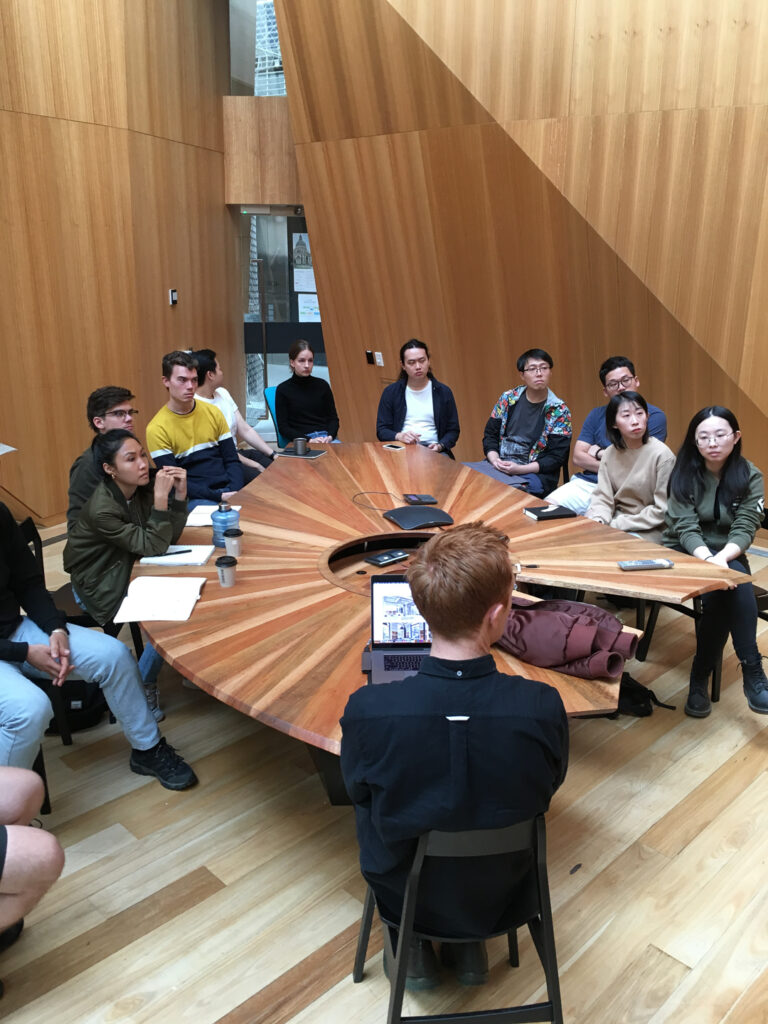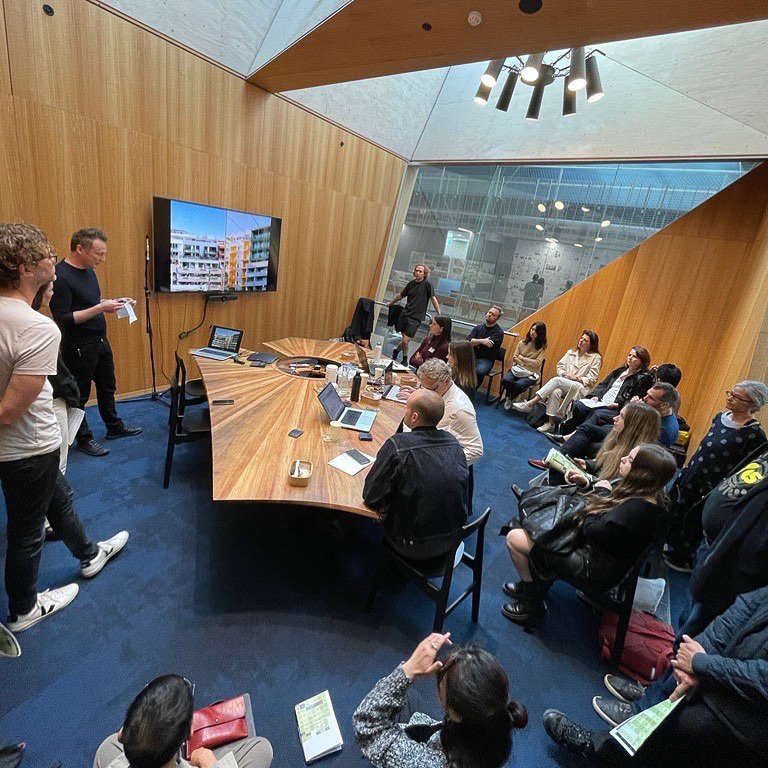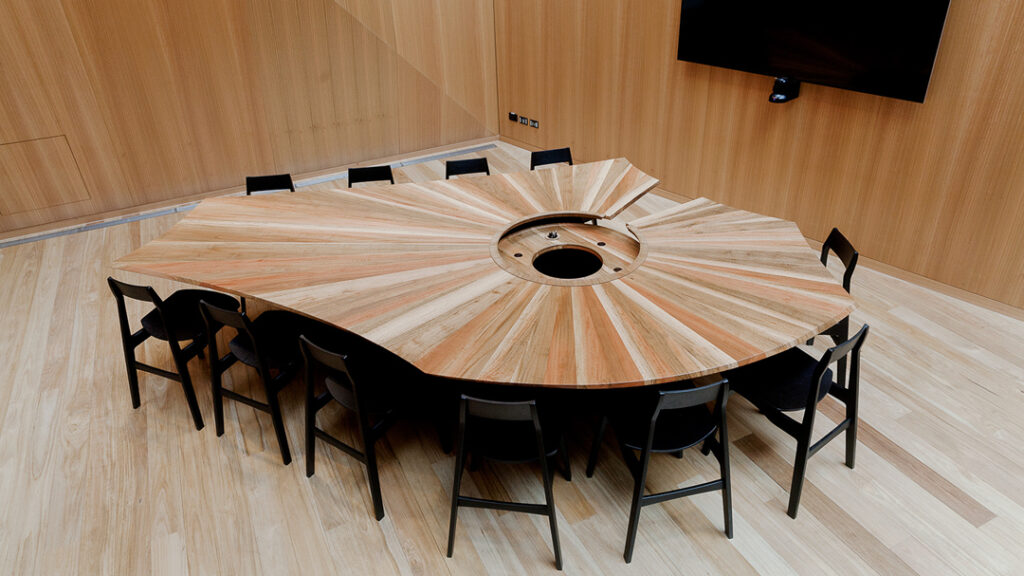
Adam Markowitz responds to a brief for a table that can bring three, six or 12 people.
(A message to the reader.)
It was a challenging brief. The design initially was for a typical boardroom-style table. My early designs showed a round table style design. But as the brief developed and we worked through it, it really took on a life of its own. I was challenged to address the specific peculiarities of the space and the various functions of the table. It introduced a number of complexities that really changed the table and changed the course of how I was looking at it as a design.
One of the really interesting discussions we had was that, okay this is a meeting room table and it’s for 12 people but it’s not going to be used by 12 people all of the time. It needs to be able to accommodate 12 people at some times and three people and six people and it needs to be effective in all those modes.. So the design became less linear, less symmetrical and encouraged a range of different ways to occupy the space.
The hanging studio is a very striking piece of architecture. It’s very complicated. There is already a lot of timber in the space, a lot of facets and architectural complexity, so my response is very much about engaging with that design and how my design could sit in that space and complement it.
In our consumer society, people have very little connection to the objects they buy. There’s no sense of relationship or ownership. It’s something that’s bought and then disposed of. By using material that has been salvaged and has a direct connection to the site, to the land and is part of an ongoing story, people are able to engage with that and connect with that object and form a relationship with it beyond the transactional. Whenever you see an object that has been well crafted, that has been made out of timber that you know the history of, and perhaps know the maker of, it brings a joy that is derived from value beyond the object itself but through that network of relationships and stories.
I really hope that the table challenges people to consider how they engage with the objects they own, and understand that quality is worth having – it is something that takes time and costs money, but it’s something that imbues your life with meaning and value beyond just having “stuff”.
Comment from Tom Kvan
The table in the Hansen Yuncken room is an asymmetric ovoid with many meanings and associations. The shape arose in part from our desire to have a table where there is no obvious ‘head’ from which one person can dominate the meeting, thereby promoting more inclusive discussions. We also needed to have a table at which video conference calls could be made, so one edge had to be longer and straighter, against which a screen might be placed.
The shape was partly determined by the planks into which the wood had been sawn when no specific use was considered. The tree had grown on the site of the new building and, when it was taken down, students had voiced concerns about the removal of trees on campus, so we assured them the timber would be used in the new building.
Another association for the tree is that Lauritz Hansen, who cofounded Hansen Yuncken in 1918, came to Melbourne from Denmark. Dean of the faculty at the time, I too am Danish and Adam Markowitz had learned his craft in Denmark.
The shape of the table very often provokes a question and this opens the conversation for the explanation and associated stories. There are, of course, some who find the irregularity uncomfortable and disconcerting (as it is intended to be).
The Glyn Davis building is open to visitors and the Hansen Yunckenroom has a glass door through which the table can be readily viewed.
Tom Kvan is an honorary professor of Architecture, Building and Planning
All photos by Ben Clement.
About Adam Markowitz
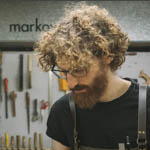 Adam Markowitz is a fine furniture & lighting designer/maker as well as a practising architect based in Melbourne, Australia. Having trained in Australia, Holland, Denmark and the USA, his practice looks to explore the blurred lines between designing and making and the reciprocal feedback loop when those two feed into each other. Founded in 2015, his eponymous interdisciplinary studio offers Architectural Services, Design Consultancy, small-batch production and bespoke one-off commission work. Since 2016 Markowitz has taught the ExLab experimental Furniture Design Studio as part of the Master of Architecture programme at The University of Melbourne and as a visiting teacher at the Center for Furniture Craftsmanship in Maine, USA. Visit www.markowitzdesign.com and follow @markowitzdesign
Adam Markowitz is a fine furniture & lighting designer/maker as well as a practising architect based in Melbourne, Australia. Having trained in Australia, Holland, Denmark and the USA, his practice looks to explore the blurred lines between designing and making and the reciprocal feedback loop when those two feed into each other. Founded in 2015, his eponymous interdisciplinary studio offers Architectural Services, Design Consultancy, small-batch production and bespoke one-off commission work. Since 2016 Markowitz has taught the ExLab experimental Furniture Design Studio as part of the Master of Architecture programme at The University of Melbourne and as a visiting teacher at the Center for Furniture Craftsmanship in Maine, USA. Visit www.markowitzdesign.com and follow @markowitzdesign



